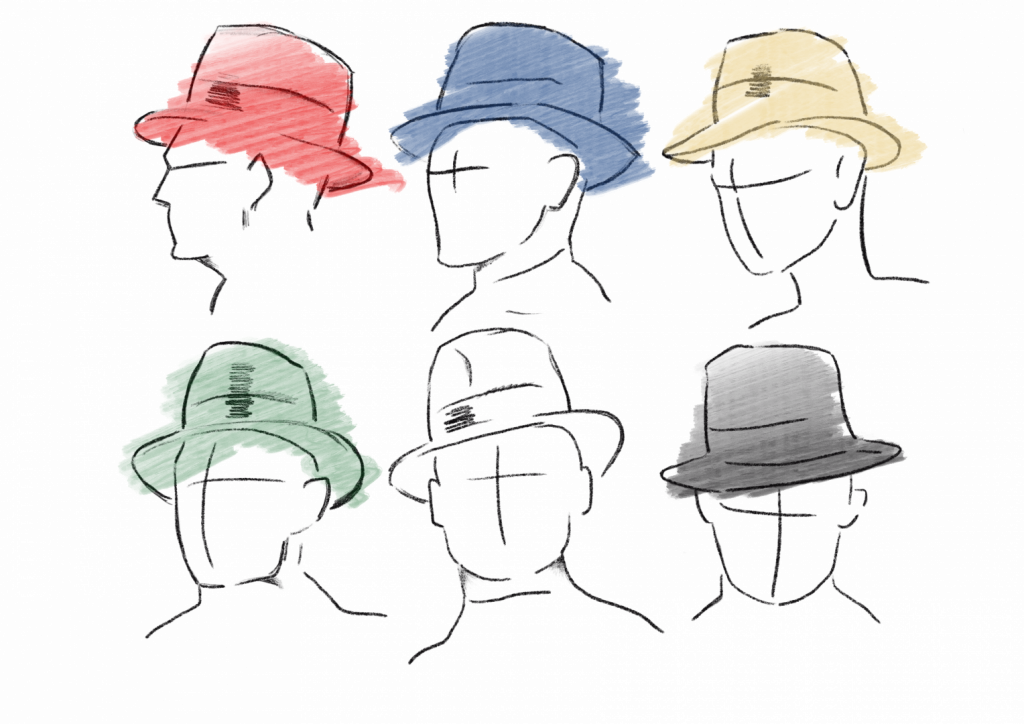PUT YOURSELF IN THE PLACE
The Walt Disney Method
How would Nicolas Copernicus go about it? What path would Frank Sinatra take? What does a cake baked by Mickey Mouse look like?
We tend to put ourselves in the position of an impasse and create blocks to our thinking. Tear down the wall of resistance and put yourself in another person’s shoes and think with their head.
You are the dreamer and think visionary, chaotic and independent of tradition and rules.
You are the realist and ask yourself, are the dreamer’s ideas realistically realisable?
You are the critic and examine, analyse and ask constructive questions.
All three perspectives are taken in succession so often
until the dreamer is satisfied with the vision,
the realist convinced of the feasibility
and the critic can no longer ask questions.
COLOURFUL HEADDRESSES
The Six Thinkers’ Hats
Imagine there are six hats in different colours. They all wear the same hat at the same time and discuss in the same direction.
The facilitator decides which hat the group will wear.
Blue hat Moderation
Red hat Feelings and intuition
Yellow hat Advantages and new possibilities
Black hat Risks and dangers
White hat Objective discussion about the current state of affairs
Green hat Alternatives

The SINs PROBE
What excites your senses?
Imagine experiencing the problem with all your senses: What does it sound like? What does it look like? How does it feel? How does it smell? How does it taste?

The Osborn Checklist
Ask the right questions
Have we thought through all the possibilities? What can we achieve through targeted changes?
Other use? What else can I use it for? Can I use it differently? Is it similar to something else? Can something be adopted? Are there parallels in the past? What can I imitate? What can I replicate? What can be changed? What characteristics can be reshaped? Other meaning, colour, movement, direction, sound, smell, form, shaping? Can something be added? Can something be strengthened? What emerges in a longer period of time, ‑cycle larger time frame? Higher frequency? More frequent occurrence? More stable, firmer, stronger? Higher? Lengthening? Thicken? Additional values? Additional components, ingredients, abilities? Duplicate? Exaggerate? Reduce? Can something be taken away? Can something be toned down? Miniaturise? Flatten? Shorten? Slimming down? Lightweight? Omit? Rationalise? Underdo, undervalue? Devalue? Replace? What can be replaced? Can something be substituted? Other ingredient, ingredient, ingredient? Material? Process, production, degradation? Other energy, driving source? Other place? Other sound, tone?rearrange? Can the order be changed? Can anything be changed in the structure? Component substitution? Other scheme, decor, model, appearance? Other layout? Other order? Swap cause and effect? Change steps, stages, tempo? Change sequence, grid? Reverse? Can the sequence be reversed? What does the opposite look like? Starting from the back? Turn it upside down? Reverse roles or tasks? Combine? Can ideas be connected? Can the idea be broken down into parts?